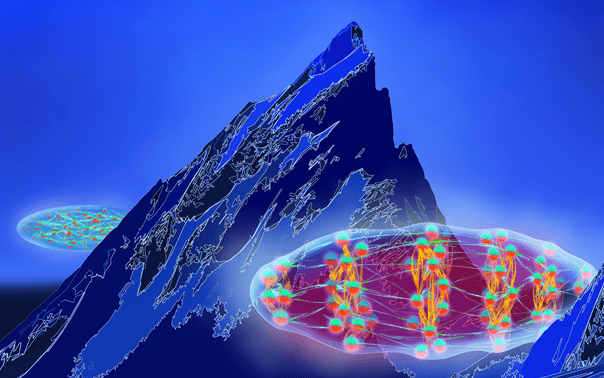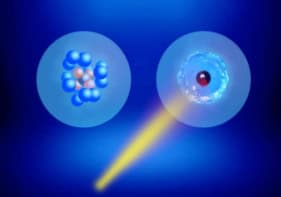
Quasiparticles called rotons have been seen for the first time in a Bose–Einstein condensate (BEC) of ultracold atoms. The research was done by physicists in Austria, Germany and Italy and could lead to new insights into superfluids and supersolids.
Almost 80 years ago, the Soviet physicist and Nobel laureate Lev Landau developed the mathematical underpinnings of superfluid helium, which flows without loss of kinetic energy and exhibits other bizarre behaviour due to quantum mechanical effects that dominate at extremely cold temperatures. His ground-breaking work revealed that some of this odd behaviour is the result of phonons and rotons. These are two types of particle-like collective excitations (quasiparticles) in the superfluid.
These quasiparticles are distinguished by their differing dispersion relations – the relationship between the momentum and energy of a quasiparticle. Phonon energy typically increases with momentum, but rotons combine large momentum with low energy.
Long-awaited quasiparticle
BECs are ultracold atomic gases in which the majority of atoms are in the same low-energy quantum state. BECs share some properties with superfluids, but before 2003 it was believed that the relatively low density of a BEC would preclude the existence of rotons. However, subsequent calculations suggested that roton excitations might occur in BECs with special types of interactions – specifically, magnetic atoms with long-range anisotropic dipole–dipole interactions.

The return of supersolids
Now, Francesca Ferlaino at the University of Innsbruck and colleagues have created a BEC with these properties by cooling approximately 100,000 erbium atoms in a cigar-shaped trap made from laser light. In this geometry, the atomic dipoles attract each other when they sit along the short axis of the trap and repel when they sit along the long axis. The team was then able to detect roton peaks in the momentum spectrum of the BEC.
Supersolids
The team now plans to investigate the interplay between phononic and rotonic modes in BECs as well as the role of roton excitations in the formation of quantum droplets. Ferlaino and colleagues also plan to put their experimental system to work on supersolids. These are rigid crystalline structures that have superfluid properties and have been made using BECs.
The research is described in Nature Physics.



